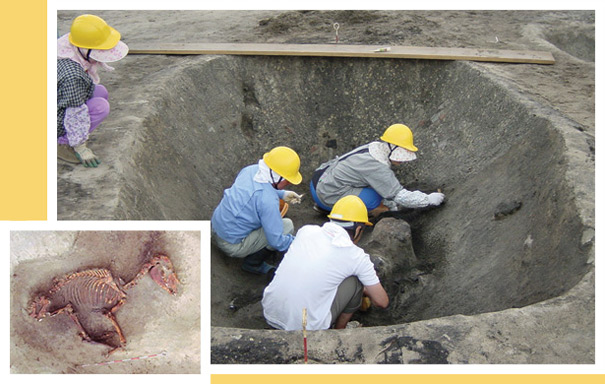A project worth its salt
 |
|
Photos courtesy of the J-PARC Project Team and the Ibaraki Prefecture Kyoiku Zaidan |
The Japan Proton Accelerator Research Complex (J-PARC) isn't scheduled to open until 2008, but the Tokai campus facility is already the site of discovery—just not of the physics variety.
While digging up the earth during early phases of construction at J-PARC, workers unexpectedly stumbled upon the ruins of an ancient salt farm as well as coins, pottery, and human remains. The finds are estimated to be from between the 15th and 17th centuries.
At first, the J-PARC community was less than thrilled with the discovery. The find meant an archaeological study was necessary and that construction of the facility would likely be interrupted. However, as it became clear the delay would be shorter than anticipated—only about a half year—many team members began taking an interest in the study and, says Shoji Nagamiya, J-PARC project director, "they started to enjoy it."
Others enjoyed it, too, it seems. Local residents pitched in to help professional archaeologists with the excavation, an effort that lasted two and a half years. "We also asked local school kids to help," says Nagamiya. "It was a nice educational project for them."
While the findings are only moderately significant on a national level, they provide a significant glimpse into the past for the local community. The salt farm is the largest discovered in northern Japan and provides vivid evidence of how salt was produced in earlier days.
The human remains reveal something of the area's early culture: "I was surprised to see that all the bodies were kept safely and nicely," says Nagamiya. "In Japan, the direction of human bodies—north for head and south for foot— is important. Most bodies were correctly aligned along this direction."
Jennifer Yauck
Click here to download the pdf version of this article.






